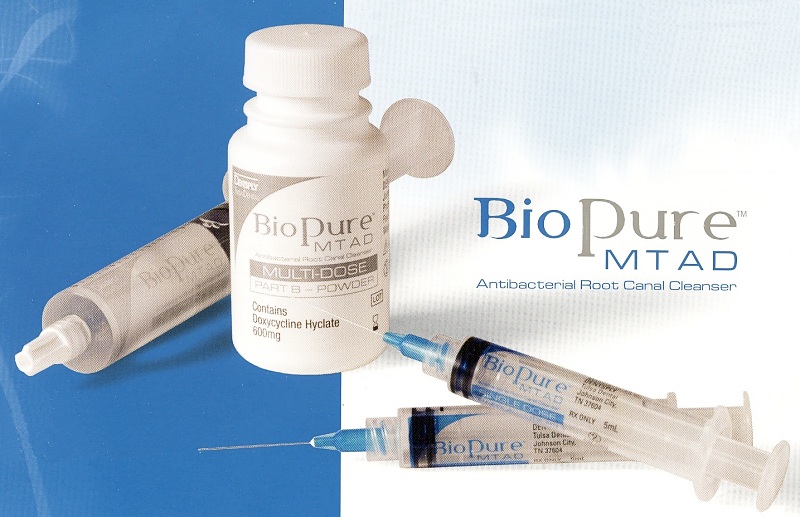Irrigation


Root canal preparation is always done in a wet canal. This helps to 1) reduce friction of the instrument, 2) remove necrotic
and vital tissue from the canal, 3) remove dentine chips and 4) avoid blocking of the canal by dentine chips.
Syringes with a narrow steel needle (27 G or 30 G) are used to introduce the irrigant into the canal. The needle must always fit
loosely in the canal to avoid extrusion of the irrigating solution to the periapical area, which could cause severe pain lasting
for even days.
Sodium hypochlorite (0.5 - 5.25 %) is often used as an irrigant. It kills effectively
microbes and helps to solubilize necrotic tissue in particular.
Chlorhexidine gluconate solution (0.2 - 0.5 %) may be used instead of hypochlorite. However, it has not the same tissue dissolving
ability.
EDTA (ethylen-diammin-tetraacetic acid) in 17 % neutral solution or corresponding demineralising agents are used to
remove the smear layer after preparation and sometimes also to help the preparation of obliterated canals.
MTAD is a new irrigating solution, which is a mixture of tetracycline, citric acid and a detergent. It effectively
removes the smear layer but treats dentine gently. It also has strong antibacterial activity against root canal bacteria.
Many other irrigating solutions or gels are on the market. Manufacturers instructions must always be carefully
followed in their use.